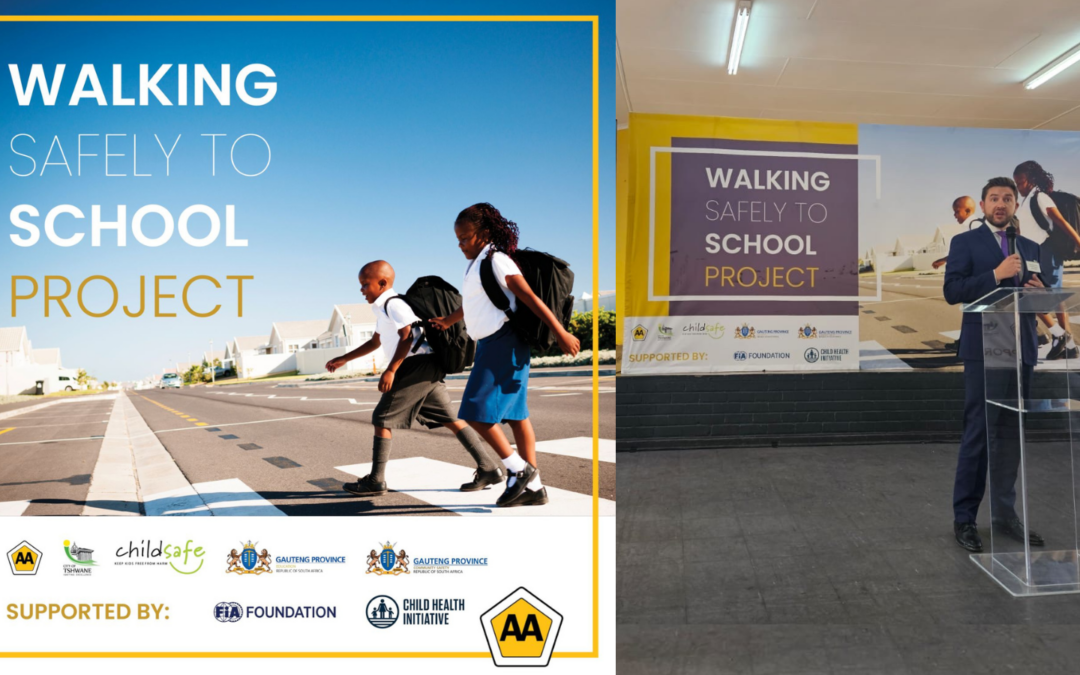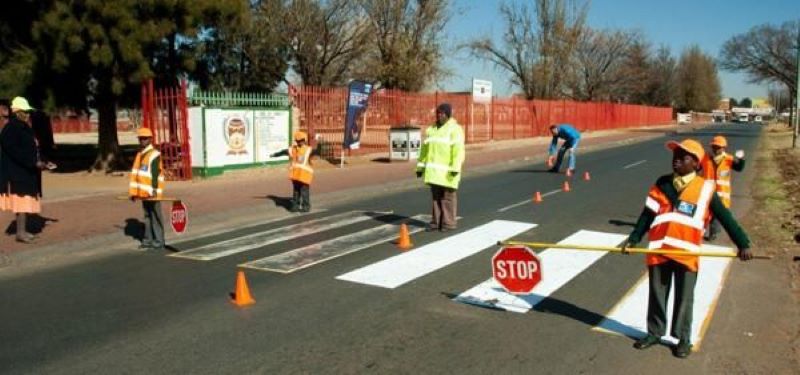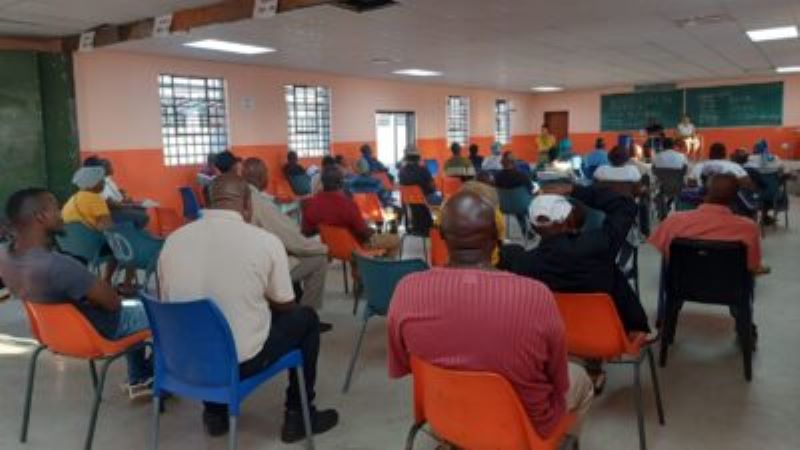Image credit: AA
The Automobile Association (AA) and ChildSafe South Africa, supported by the FIA Foundation and its Child Health Initiative (CHI), took a significant step last week towards improving road safety in Mamelodi, Tshwane through the launch of Project WATCH to upgrade road safety around ten schools.
The Walking Safely to School (WATCH) project will be implemented over the next two years from April 2024 to March 2026 and aims to improve road infrastructure and promote road safety around the schools with modifications to signs, traffic markings, speed humps, raised pedestrian crossings, and sidewalks around the school zones.
Supported by Star Rating for Schools (SR4S), ChildSafe will conduct star rating assessments of the infrastructure modifications and providing road safety education.
The City of Tshwane (CoT) conducted School Zone Road Safety Assessments at the ten selected schools with recommendations from the audit informing modifications at Dr I.M Monare Primary School, Bohlabatsatsi Primary School, Pula Difate Primary School, Meetse-A-Bophelo Primary School, Mahube Valley Primary School, Ramahlale Primary School, Tsako-Thabo Secondary School, Zamintuthuko Primary School, Bula-Dikgoro Primary School and Mamelodi High School.
The project is being supported and endorsed by the City of Tshwane, Gauteng Department of Education, and the Gauteng Department of Community Safety. Through various consultations, parents, learners, and the broader community will also be involved.
Post-Launch Parent Meeting: Collaboration in Action (images credit: Child Safety South Africa)
The WATCH project is an expansion of earlier projects including a Ford Foundation-funded project in Mamelodi, an FIA Foundation-funded project in Khayelitsha in Cape Town, and an FIA Foundation-funded project implemented with UNICEF support in Delft and Belhar, also in Cape Town.
It is also part of a bigger initiative to implement similar modifications at other schools across South Africa over time, which will include extensive lobbying by ChildSafe SA and the AA to reduce speed limits at school zones throughout South Africa from the current 40km/h to 30km/h.
According to the Road Traffic Management Corporation (RTMC), children constitute 10.2 percent of road fatalities in South Africa and seven percent of road fatalities in Gauteng. The 2023 General Household Survey notes that about two-thirds of the 15.4 million school-going children in South Africa must walk to school daily (p13 of full report). The World Health Organization’s (WHO) Global Status Report on Road Safety 2023 says road traffic crashes remain the leading killer of children and youth aged 5-29 years. Road safety intervention around schools is therefore critical.
Children are at a disadvantage on the road because of their height, which limits their ability to see or be seen. A child’s cognitive skills are also limited, which affects their perception of speed and distance. Creating safer roads by reducing the current speed limit around school zones and improving road infrastructure will lead to a reduction in the number of fatalities due to road traffic collisions and injuries.
ChildSafe South Africa emphasises that various factors contribute to the increased risk, such as inadequate road infrastructure, a lack of supervision, and the necessity for many children to walk as their primary means of transport. As such, it is imperative that interventions are implemented to make walking safer, ultimately reducing the vulnerability of pedestrians, especially children. Traffic calming measures and comprehensive road safety strategies have become an urgent necessity.
ChildSafe Executive Director and Spokesperson, Zaitoon Rabaney said, “We continue to advocate for the 30km/h speed restriction around schools as well as environmental modifications that influence driver behaviour to adhere to slower speeds in school areas. Equipping our children and their families with the necessary knowledge and skills to navigate roads safely is paramount.”
Saul Billingsley, Executive Director of the FIA Foundation said, “The WATCH project showcases the importance of partnership across public, private, and civil organisations to address the leading global cause of child injury deaths, road traffic crashes. These infrastructure assessment and improvements focus on separating children from traffic and slowing road speeds. Every child deserves an education, and to arrive at school safely.”
SR4S Global Program Coordinator Minh Vo said, “iRAP is proud to support the project with SR4S assessments, which will help guide road upgrades to enhance infrastructure safety. In line with Safe System principles, the SR4S model prioritizes a 30 km/h speed limit in areas with mixed pedestrian and vehicle traffic and requires more robust pedestrian facilities to achieve a 3-star or higher rating.
Frank Lambert, Chief Engineer, Roads and Transport Department, Transportation Planning at the City of Tshwane said, “The City of Tshwane welcomes the collaboration with ChildSafe South Africa and the introduction of traffic calming measures as well as environmental modifications around schools in Mamelodi. These interventions support the City in advancing and achieving the its objectives towards creating safer schools with specific focus on road safety and securing the safety of scholar pedestrians.”
Sikkie Kajee, Chairman of the AA South Africa said, “This is an important initiative that will ensure improved pedestrian safety for learners at the ten schools. Importantly, the collaboration of all the role-players is an example of what can be achieved when everyone pulls in the same direction for the benefit of learners and road safety. We are excited about the outcomes of the WATCH project and would like to see it replicated throughout the country. That will be our goal after this project is finalised.”
Article credit – Issued on behalf of:
- Automobile Association of South Africa (AA)
- ChildSafe South Africa
- City of Tshwane
- Gauteng Department of Education
- Gauteng Department of Community Safety
- FIA Foundation and the Child Health Initiative



